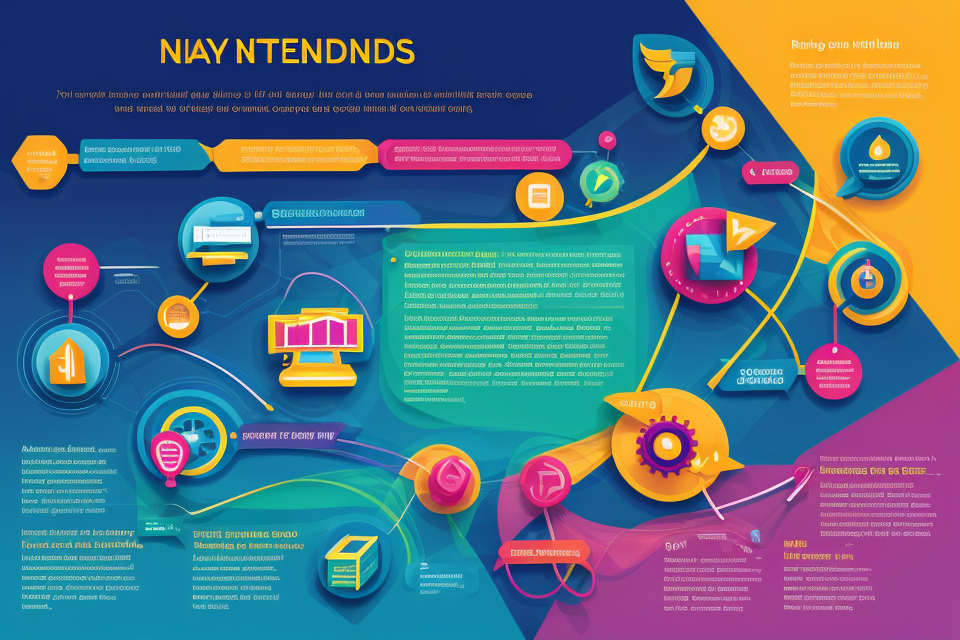Data science is a field that deals with the extraction of insights and knowledge from data. It is a multidisciplinary field that combines statistics, mathematics, computer science, and domain-specific knowledge to solve complex problems. However, there is a common misconception that data science is primarily about programming and coding. While programming and coding are important skills for a data scientist, they are just one part of the larger picture. In this article, we will explore the role of programming and coding in data science and whether it is the most important aspect of the field. We will also discuss the other skills and techniques that are required to become a successful data scientist.
Data science is a field that involves extracting insights and knowledge from data. While programming and coding are certainly important skills for data scientists to have, they are not the only skills required. Data scientists also need to have a strong understanding of statistics and mathematics, as well as the ability to communicate their findings effectively. In addition, data scientists often work with large and complex datasets, so they need to be familiar with data cleaning and preprocessing techniques. Overall, while programming and coding are important aspects of data science, they are just one part of a larger set of skills that are necessary for success in this field.
What is Data Science?
Definition and scope
Definition of data science
Data science is a field that involves the extraction of insights and knowledge from structured and unstructured data using a combination of mathematical, statistical, and computational techniques. It involves the use of various tools and technologies to collect, process, analyze, and visualize data in order to extract meaningful insights and inform decision-making.
Scope of data science
The scope of data science is vast and encompasses a wide range of applications across various industries. It is used in fields such as finance, healthcare, marketing, education, and more, to support decision-making, improve processes, and drive innovation. Data science is also used in research and development to explore new areas and generate new knowledge.
Overview of data science processes
Data science processes typically involve several stages, including data collection, data cleaning and preprocessing, data analysis, and data visualization. These stages are iterative and may involve feedback loops to refine and improve the analysis. Data science also involves communication of findings and insights to stakeholders, as well as ethical considerations and data privacy concerns.
In summary, data science is a multidisciplinary field that involves the use of mathematical, statistical, and computational techniques to extract insights and knowledge from data. Its scope is vast and encompasses a wide range of applications across various industries, and its processes typically involve several stages, including data collection, cleaning and preprocessing, analysis, visualization, communication, and ethical considerations.
Data science skills and tools
Data science is a multidisciplinary field that combines statistical and computational techniques to extract insights and knowledge from data. The data science process typically involves the following steps: data acquisition, data cleaning and preprocessing, data analysis, and data visualization.
Data science skills
To be a successful data scientist, one must possess a combination of technical and soft skills. Technical skills include programming languages, databases, data visualization tools, and statistical software. Soft skills include communication, problem-solving, critical thinking, and collaboration.
Programming languages for data science
Python is the most popular programming language for data science, due to its simplicity, readability, and vast number of libraries for data analysis and visualization. R is another popular language, especially for statistical analysis and data visualization. Other programming languages used in data science include Java, Scala, and Julia.
Other data science tools
In addition to programming languages, data scientists use a variety of tools to analyze and visualize data. Some popular tools include SQL for database management, Jupyter Notebook for interactive computing, and Tableau and Power BI for data visualization. Other tools include Pandas for data manipulation, Scikit-learn for machine learning, and NLP tools for natural language processing.
The Role of Programming and Coding in Data Science
The importance of programming and coding
Programming and coding as the foundation of data science
- Programming and coding form the very foundation of data science. It is the basis upon which the entire field of data science is built.
- Without programming and coding, data scientists would not be able to manipulate, transform, and clean data.
- They would not be able to create algorithms, models, or visualizations.
- They would not be able to automate repetitive tasks or build predictive systems.
Programming and coding as a tool for problem-solving
- Data science is fundamentally about solving problems, and programming and coding are essential tools for doing so.
- They allow data scientists to take raw data and turn it into useful insights.
- They enable data scientists to test hypotheses, explore patterns, and draw conclusions.
- They allow data scientists to create models that can make predictions and support decision-making.
Programming and coding as a means of collaboration
- Data science is often a collaborative effort, and programming and coding are essential means of collaboration.
- They allow data scientists to share their work with others, whether it be through code repositories, shared notebooks, or interactive dashboards.
- They allow data scientists to automate the process of data collection, preprocessing, and analysis, which can be time-consuming and error-prone when done manually.
- They allow data scientists to work together on the same project, sharing ideas, techniques, and results.
In summary, programming and coding are essential to data science because they provide the foundation upon which the field is built, they are essential tools for problem-solving, and they facilitate collaboration among data scientists. Without programming and coding, data science would not be possible.
The range of programming languages in data science
Programming and coding play a crucial role in data science, as they enable data scientists to manipulate, analyze, and visualize data. With a variety of programming languages available, data scientists must choose the right tools for the job.
In data science, there is a range of programming languages that can be used for different purposes. Some of the most popular programming languages for data science include Python, R, and SQL.
Python is a versatile programming language that is widely used in data science. It has a vast library of modules and packages, such as NumPy, Pandas, and Matplotlib, that make data manipulation and analysis easy. Python’s readability and simplicity make it a popular choice among data scientists.
R is another popular programming language for data science. It is specifically designed for statistical analysis and graphics. R has a wide range of packages, such as ggplot2 and dplyr, that make data visualization and manipulation easy. R is also popular among statisticians and data analysts.
SQL (Structured Query Language) is a programming language used for managing relational databases. It is essential for data scientists to have a basic understanding of SQL to retrieve and manipulate data from databases. SQL is also used to join tables and filter data based on specific criteria.
Other programming languages for data science include Julia, Scala, and MATLAB. Julia is a high-level programming language that is gaining popularity in the data science community. It is designed for numerical and scientific computing and has a syntax similar to Python. Scala is a general-purpose programming language that is used for building large-scale applications. It has a strong focus on functional programming and is used in big data applications. MATLAB is a programming language used for scientific and engineering applications. It has a built-in programming language and a vast library of tools for data analysis and visualization.
In conclusion, the range of programming languages in data science is vast, and data scientists must choose the right tools for the job. Python, R, and SQL are some of the most popular programming languages used in data science, each with its own strengths and weaknesses. Data scientists must also consider other programming languages such as Julia, Scala, and MATLAB for specific tasks and applications.
Data Science Beyond Programming and Coding
Data cleaning and preparation
Data cleaning and preparation are essential components of the data science process. They involve transforming raw data into a clean, structured, and usable format for analysis. This process is crucial because data scientists rely on high-quality data to make accurate predictions and draw meaningful insights.
The role of data cleaning in data science
Data cleaning plays a critical role in data science because it ensures that the data used for analysis is accurate, consistent, and free from errors. It involves identifying and correcting issues such as missing values, outliers, and inconsistencies in the data. By cleaning the data, data scientists can increase the reliability and validity of their analysis.
Data preparation techniques
Data preparation techniques involve transforming raw data into a structured format that is suitable for analysis. These techniques include:
- Data integration: Combining data from multiple sources to create a single dataset.
- Data transformation: Converting data from one format to another, such as converting text data to numerical data.
- Data normalization: Standardizing data to ensure consistency across different datasets.
- Data sampling: Selecting a subset of data for analysis to reduce the size of the dataset.
Tools for data cleaning and preparation
There are several tools available for data cleaning and preparation, including:
- Python libraries: Libraries such as Pandas and NumPy provide powerful tools for data manipulation and transformation.
- R packages: Packages such as dplyr and tidyr provide tools for data cleaning and preparation.
- Spreadsheets: Spreadsheets such as Excel and Google Sheets can be used for basic data cleaning and preparation tasks.
Overall, data cleaning and preparation are critical components of the data science process. By ensuring that the data used for analysis is accurate and consistent, data scientists can increase the reliability and validity of their analysis and draw meaningful insights from the data.
Data visualization and communication
The importance of data visualization in data science
Data visualization is a critical component of data science. It plays a vital role in the interpretation and communication of complex data. By creating visual representations of data, data scientists can help non-technical stakeholders to better understand the underlying patterns and trends in the data.
Data visualization tools and techniques
There are numerous tools and techniques available for data visualization in data science. Some of the most popular include:
- Matplotlib: A Python library for creating static, animated, and interactive visualizations in Python.
- Seaborn: A Python data visualization library based on matplotlib. It provides a higher-level interface for creating informative and attractive visualizations.
- Plotly: An open-source JavaScript library for creating interactive, web-based visualizations.
- Tableau: A data visualization software that allows users to create interactive and visually appealing charts, maps, and dashboards.
Communicating data science results to non-technical audiences
Effective communication is essential in data science, as it enables data scientists to share their findings with non-technical stakeholders. Clear and concise communication can help to build trust and foster collaboration between technical and non-technical teams.
To communicate data science results to non-technical audiences, data scientists should:
- Use simple and concise language
- Avoid technical jargon
- Use visualizations to illustrate key points
- Provide context and background information
- Practice active listening and be responsive to questions and feedback.
Machine learning and model building
Machine learning has emerged as a core component of data science, enabling the development of predictive models that can extract insights from complex data sets. In this section, we will explore the role of machine learning in data science and the process of model building.
Overview of machine learning algorithms
Machine learning algorithms can be broadly classified into three categories: supervised learning, unsupervised learning, and reinforcement learning.
- Supervised learning involves training a model on labeled data, where the model learns to map input features to output labels. Examples of supervised learning algorithms include linear regression, logistic regression, and support vector machines.
- Unsupervised learning involves training a model on unlabeled data, where the model learns to identify patterns and relationships in the data. Examples of unsupervised learning algorithms include clustering, dimensionality reduction, and anomaly detection.
- Reinforcement learning involves training a model to make decisions in a dynamic environment, where the model learns to optimize a reward function. Examples of reinforcement learning algorithms include Q-learning and policy gradient methods.
Model building and evaluation
The process of model building in machine learning involves selecting appropriate algorithms, preprocessing and transforming data, selecting relevant features, and tuning model parameters. The quality of a machine learning model is evaluated using various metrics, such as accuracy, precision, recall, F1 score, and area under the curve (AUC).
Once a model is built, it can be deployed in a production environment, where it can be used to make predictions on new data. However, it is important to monitor the performance of the model over time and retrain the model periodically to ensure that it remains accurate and relevant.
In summary, machine learning is a key component of data science, enabling the development of predictive models that can extract insights from complex data sets. The process of model building involves selecting appropriate algorithms, preprocessing and transforming data, selecting relevant features, and tuning model parameters. The quality of a machine learning model is evaluated using various metrics, and it is important to monitor the performance of the model over time and retrain the model periodically to ensure that it remains accurate and relevant.
The Future of Data Science
Emerging trends in data science
As data science continues to evolve, new trends are emerging that are shaping the future of this field. Here are some of the most notable trends:
- Artificial intelligence and machine learning: These two concepts are becoming increasingly intertwined, with machine learning being used to improve the performance of AI systems. AI is also being used to automate data analysis, making it easier for data scientists to extract insights from large datasets.
- Big data and real-time analytics: With the rise of big data, there is a growing need for real-time analytics. This involves processing data as it is generated, rather than storing it for later analysis. Real-time analytics is particularly important in industries such as finance, where it can help organizations make faster, more informed decisions.
- Explainable AI and ethical considerations: As AI becomes more prevalent, there is a growing need for explainable AI systems that can provide clear explanations for their decisions. This is particularly important in fields such as healthcare, where AI systems may be making life-and-death decisions. Additionally, there is a growing focus on ethical considerations in data science, such as ensuring that AI systems are not biased or discriminatory.
The evolving role of programming and coding
- The future of programming and coding in data science
- The increasing importance of statistical and mathematical knowledge
- The rise of automated tools and machine learning algorithms
- The need for more specialized programming skills, such as data visualization and big data processing
- Emerging programming languages and tools
- Python’s growing popularity in data science
- The rise of R for statistical analysis and visualization
- The emergence of SQL for big data management and analysis
- The impact of automation and AI on programming and coding in data science
- The shift towards more advanced automation and AI techniques
- The need for data scientists to stay up-to-date with the latest tools and technologies
- The potential for AI to replace some traditional programming tasks in data science
FAQs
1. What is data science?
Data science is an interdisciplinary field that involves using statistical and computational techniques to extract insights and knowledge from data. It involves a wide range of activities such as data cleaning, data modeling, data visualization, and machine learning.
2. Is data science primarily about programming and coding?
While programming and coding are important skills in data science, they are not the only skills required. Data science also involves understanding the underlying statistical concepts and techniques, as well as the ability to communicate and collaborate with others.
3. What programming languages are used in data science?
Python and R are the most commonly used programming languages in data science. Python is popular due to its ease of use and extensive libraries, while R is popular for its strong support for statistical analysis. Other languages such as SQL, Julia, and Scala are also used in certain areas of data science.
4. Can I learn data science without being a good programmer?
While programming skills are important in data science, they are not the only skills required. If you have a strong understanding of statistics and mathematics, as well as the ability to think critically and communicate effectively, you can still learn data science. There are also many resources available online to help you learn programming as you go along.
5. What are some other important skills in data science?
In addition to programming and coding, other important skills in data science include understanding statistical concepts and techniques, data visualization, machine learning, and the ability to communicate and collaborate with others. It is also important to stay up-to-date with the latest tools and technologies in the field.



